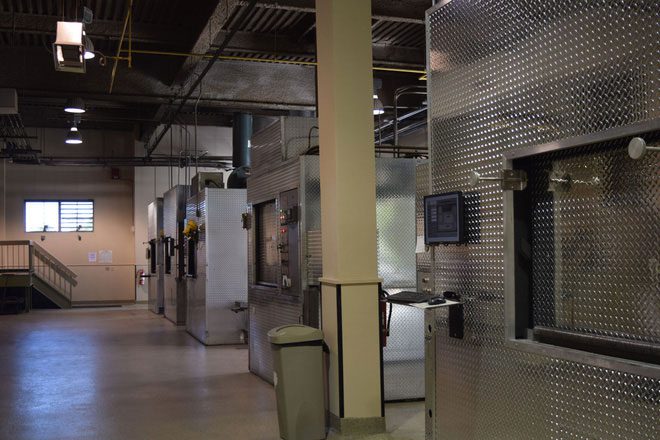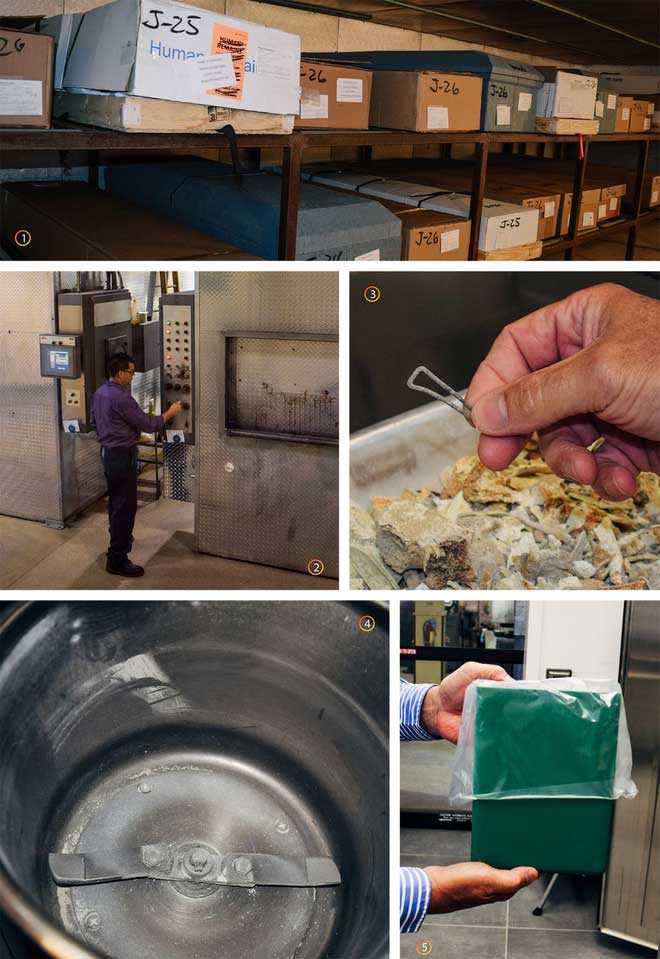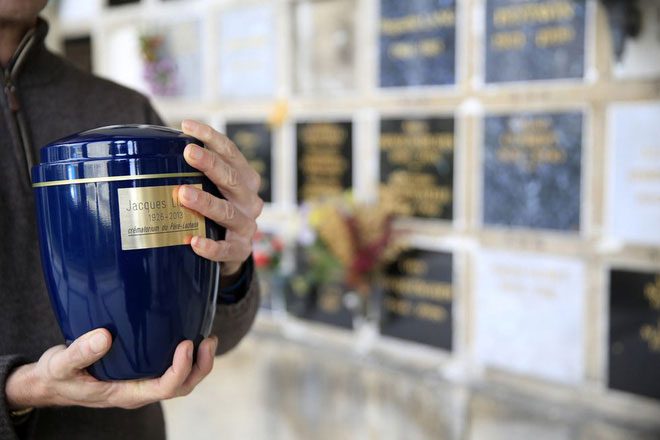Back in 1980, less than 10% of Americans were cremated. This figure is now around 53%, according to the North American Cremation Association.
The shift is attributed to various factors including religion, culture, and wider societal acceptance. However, no event has accelerated this change more than the Great Recession (the global downturn of 2009). “We noticed that the cremation rate increased during the economic downturn at the end of 2008 when people were losing their jobs. Cremation is a more cost-effective alternative to traditional burial,” commented Jim Koslovski, Director of Rosehill and Rosedale Cemeteries in New Jersey.
Rosehill and Rosedale charge only $190 for cremating a body, with additional fees for caskets, flowers, and other services. In contrast, a burial plot can cost $2,500, plus $1,900 in additional fees.
How Crematoriums Work
Typically, when the hearse enters the crematorium, the deceased is encased in a casket. This serves both to show respect for the deceased and to protect the cremation technicians from infectious diseases, as well as to help them handle the remains safely before cremation.
The caskets are then placed in the crematorium’s cold storage area. At Rosehill, they aim to conduct all cremations and return the ashes to the family within 24 hours. This aligns with the principle of burying the deceased in U.S. states.
Once preparations for cremation are ready, the casket is removed from cold storage and placed on a hydraulic lift that resembles a bin, then transferred to one of the cremation units (more accurately referred to as a cremator; however, Americans tend to avoid this term as it evokes images of the incinerators in Nazi concentration camps like Auschwitz).
A small mistake or oversight can have unforgiving consequences, which is why Rosehill employs two forms of ID to ensure the family receives the correct remains. A copy of the receipt is attached outside the cremation unit, and a metal ID tag accompanies the deceased inside the unit.
A cremation unit has two chambers: the Main Chamber, where the body is placed, and the Secondary Chamber or “after-chamber”, where the gases produced by the cremation process are consumed. The typical primary chamber has brick-lined walls, and a floor and ceiling made of high-temperature concrete.
The primary chamber (where the body is cremated) is heated from 760 degrees Celsius to 1,093 degrees Celsius for 1.5 to 2 hours.
The gases and particulates formed enter the secondary chamber, a 9-meter labyrinth designed to retain the gases for at least one second. The secondary chamber is built to withstand hot gas flows at temperatures up to 927 degrees Celsius.

Cremation units at Rosehill. (Photo: CAREN CHESLER/Popular Mechanics).
“Any solid material will turn into gas if heated to the right point.” Essentially, that’s what happens to the body when the tissue is heated to the point where its solids turn into gas and become combustible. The key is to design the equipment to consume most of the emissions so they comply with state environmental regulations,” said Brian Gamage, Marketing Director of American Crematory Equipment in Florida.
According to environmental agencies in most U.S. states, particulates emitted must be smaller than 0.1 on the 0.0283 standard cubic meter scale. Problems arise when the volume of gas (smoke) becomes too great for the secondary chamber to handle, causing it to overflow. This can happen if the machine is not properly designed or if the operator overloads the primary chamber, which can occur for surprising reasons – for example, placing an obese person into the equipment at the wrong time of day.
It may sound morbid, but weight is a concern for crematory operators. The machine does not distinguish between a person weighing 150 pounds and one weighing 400 pounds. It simply does its job.
The general rule in crematories is that 100 pounds of human fat is equivalent to 65 liters of kerosene. If a person weighs 400 pounds, at least 200 pounds of that will be fat that burns quickly. If you place that person into a machine that is too hot, since cremation units tend to be hotter at the end of the day, the secondary chamber may emit smoke and odors heavily and overflow into the air.
While some crematories can process bodies faster, a typical cremation unit can complete the cremation in about 1.5 hours. This time varies depending on the weight of the deceased and the type of casket used. The time-consuming nature limits the number of cremations each unit can handle in a day.

Cremation process in photos: (1) The body is identified, and the family of the deceased consents to cremation. Medical devices and prosthetics are removed, and jewelry is retrieved before the body is placed in the combustible container. (2) The container is placed inside the cremation chamber and heated from 760 degrees Celsius to 1,093 degrees Celsius for 1.5 to 2 hours. (3) The remaining matter is cooled, and technicians remove metal fragments with a magnet. (4) The remains are ground into fine powder. (5) The ashes are placed in a container and returned to the family. (Photo: CAREN CHESLER/Popular Mechanics).
Once the cremation process is completed, the remains are placed in a silver baking tray. A technician runs a magnet over them to remove non-flammable materials from the cremation process. These often come from pins, screws, hinges, and prosthetics of the deceased. The technician then visually inspects and removes any materials the magnet may have missed, such as leftover glass fragments.
The crematory places the remaining bones and ashes into a pulverizer, unlike a food processor, to grind them into a more uniform powder. The remains are then placed into a container for the family.
Returning to Mother Earth
Of course, cremating the deceased is not a new concept. Cremation dates back to the Stone Age and was common in ancient Greece and Rome. In certain religions, such as Hinduism, cremation, especially outdoor cremation, is a very popular method of disposing of the dead.
The rise of Christianity stifled cremation in the West. By 400 A.D., around the time of Emperor Constantine’s Christianization of the Roman Empire, Rome had banned cremation as a pagan practice. The theological reason for this prohibition was linked to resurrection – they wanted to keep the body intact for the deceased to be resurrected in the afterlife. Jewish law also forbids this practice. By the 5th century, cremation had disappeared from Europe.
This practice saw a revival in Europe in the 1870s, primarily as an effort to curb the spread of disease.
The first modern crematory in the U.S. was built in 1876. By 1900, there were 20 crematories in the U.S. This practice gained further momentum in 1963 when the Catholic Church reversed its stance on cremation during the reforms of Vatican II, stating that cremation was permitted. Today, there are over 3,000 crematories across the U.S.
Jim Koslovski noted that the widespread acceptance of cremation aligns with practical conditions as cemeteries are running out of space. He estimates that Rosehill has only 15 years left before it runs out of room.
“From dust, we return to dust” – Humans are born from the Earth and will eventually return to it. But how we return to Mother Earth is more important than the emotional story – it is an environmental issue.

Urn. (Photo: GETTY IMAGES).
As cremation continues to be viewed as the top solution to replace burial, the emissions associated with this process have become a concern – to the extent that people are starting to consider some alternatives to cremation.
Currently, there is a water-based process known as alkaline hydrolysis, invented as a way to dispose of cattle infected with mad cow disease. It is marketed as a more environmentally friendly option after slaughter for humans since it produces less carbon monoxide and pollution.
The alkaline hydrolysis process involves placing a body in a chamber filled with water and potassium hydroxide and heating it to 149 degrees Celsius under high pressure. After three hours, the body turns into a brownish liquid, and the bones are soft enough to be crushed. The bones can be returned to the family, while the liquid can be disposed of in the sewer system.
Perhaps unsurprisingly, this method has not been particularly successful. It is slower than cremation. More importantly, this technology is more expensive: A stainless steel pressure device can range from $175,000 for a basic unit to $500,000 for a high-end unit, while a cremation unit costs about $110,000. There are also legal issues since this process is prohibited unless a state passes specific legislation allowing it.
Furthermore, the ethical issue arises when a part of the deceased’s body (after alkaline hydrolysis) is transformed into liquid and flows into the sewer system. This is difficult for the family members to accept.


















































